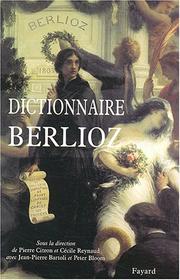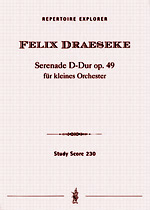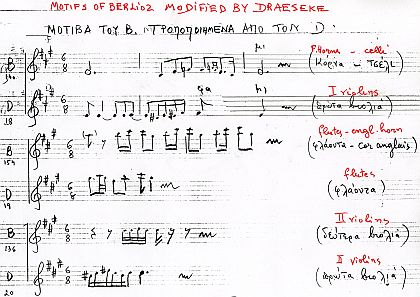Berlioz and Draeseke:
A Comparison of Two Love Scenes
|
Essay prepared by Markos Dragoumis. |
|
|
|
Berlioz and Draeseke: A Comparison of Two Love Scenes
It is interesting to read what is written about the reactions of some of Berlioz's contemporaries to his music. For instance, the book contains a large entry on Mahler who was deeply affected by the example of Berlioz. However the dictionary passes by some other important names such as those of Alkan, Raff, and Draeseke who ought also to be mentioned for the same reason. It is clear, for instance, that the Finale of Raff's "Lenore" symphony relies heavily on the "Ride to the Abyss" from Berlioz's "Damnation of Faust". Let us turn now to Draeseke. In 1889 the first performance of his delightful Serenade op. 49 of 1888 was given in Dresden. The total duration of its five movements is about 25 minutes. The third movement is a seven minute Andante con espressione entitled "Love Scene" like the corresponding double in length third movement of Berlioz’s Dramatic Symphony "Romeo and Juliet" op. 17 of 1839. I assume that Draeseke refers here to Berlioz’s Love Scene employing apart from the same title, several other common stylistic features. The orchestra selected by Berlioz to portray the passionate love of Romeo and Juliet consists of the usual woodwinds and strings plus four French horns. Draeseke adds to this group a timpanum and reduces by half the number of horns. In both introductory passages (46 bars in Berlioz and 34 in Draeseke) the strings are muted and the double-basses are played pizzicato. The tonality of both movements is A major and the time signature 6/8. The dynamics in the beginning in both cases are piano in the double-basses and pianissimo in the other instruments. The presence of forte in the remaining sections is relatively limited. There where the two movements differ slightly is in their tempi. Draeseke remains within the confines of the Andante con espressione in the entire movement, while the corresponding picture in Berlioz is more There are very few common melodic traits shared by the two "Love" movements. The themes of Draeseke contrary to those of Berlioz are distinguished by their brevity and individuality. And it is only fleetingly that they can be identified to a small degree with motifs (usually secondary) in the score of Berlioz (see Example). This suggests that Draeseke interlaces his score with that of Berlioz not out of lack of inspiration but in order to pay homage to an earlier composer whom he admired and had influenced him, something which was done later, and more conspicuously, by Ravel in his "Tombeau de Couperin".
©2009 Markos Dragoumis |
| Draeseke's Serenade on CD: | |
|
|
[Chamber Music] [Orchestral Music] [Keyboard Music] [Listen: mp3 - Real Audio] [Top]
© All contents copyright by the International Draeseke Society
 The "
The " complicated. After the initial Adagio (♪=88), in bar 20 we have Un pochettino animato, in bar 31 Tempo I and in bar 44 Animato (♪=126), a variability which continues up to end of the movement. The abundance of time markings in Berlioz's score is dictated by his intention to follow the fluctuations of the Shakespearian dialogue between the two lovers; while Draeseke operates here without having in mind a given literary program. However his score includes a short "quasi recitativo" passage (bars 71-74) involving a dialogue between the solo clarinet and cello. The corresponding section in Berlioz (col carattere di Recitativo) occurs in bars 57-118, with Romeo represented by the solo cello and Juliet by the flute and oboe.
complicated. After the initial Adagio (♪=88), in bar 20 we have Un pochettino animato, in bar 31 Tempo I and in bar 44 Animato (♪=126), a variability which continues up to end of the movement. The abundance of time markings in Berlioz's score is dictated by his intention to follow the fluctuations of the Shakespearian dialogue between the two lovers; while Draeseke operates here without having in mind a given literary program. However his score includes a short "quasi recitativo" passage (bars 71-74) involving a dialogue between the solo clarinet and cello. The corresponding section in Berlioz (col carattere di Recitativo) occurs in bars 57-118, with Romeo represented by the solo cello and Juliet by the flute and oboe. 
